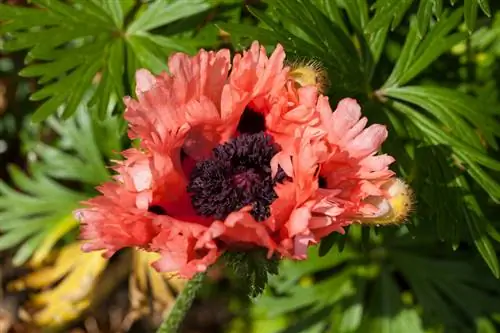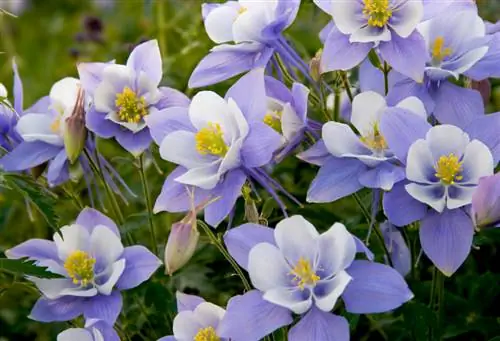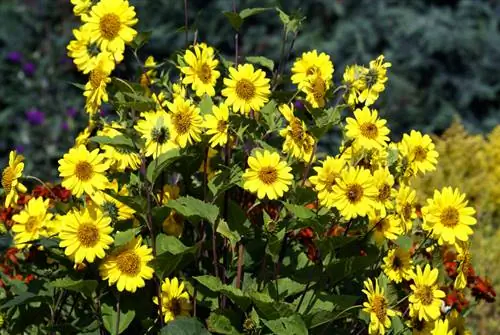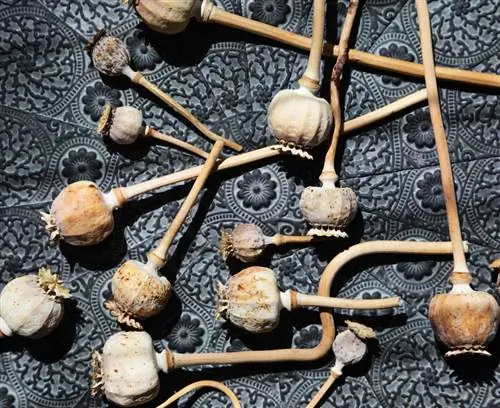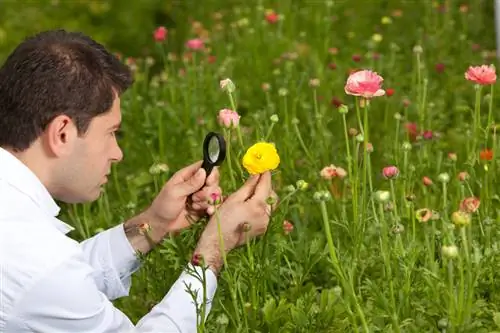- Author admin [email protected].
- Public 2023-12-16 16:46.
- Last modified 2025-01-23 11:20.
Whether oriental poppy, Turkish poppy, perennial poppy, garden poppy, fire poppy or oriental poppy - the Turkish poppy has many names. Before you plant it, you should get an overview of its characteristics!
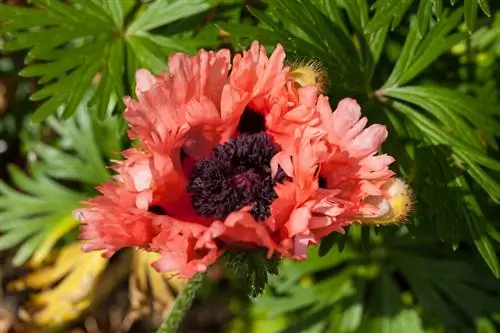
What characterizes the Turkish poppy as a perennial?
The Turkish poppy is a perennial, herbaceous perennial with showy flowers and a height of 50 to 100 cm. The plant prefers sunny locations and well-drained soil, is hardy and requires little care. Ideally it is planted in the middle of a perennial bed.
A perennial from the Orient
The Turkish poppy is a perennial, perennial and herbaceous plant. It is a typical summer bloomer and belongs to the poppy family within the buttercups. This perennial plant has its origins in mountainous regions of northern Iran, northern Turkey and the Caucasus.
Stronger and larger than the corn poppy
Papayer orientale grows more vigorously than the common poppy, which is native and well-known in this country, and appears larger overall. The clumps are low and a total height of between 50 and 100 cm is achieved. This makes this perennial perfect for the center or background of beds and borders.
It overwinters green
This is what you should know about the leaves of the Turkish poppy:
- up to 30 cm long
- form a basal rosette
- feathered
- greygreen
- very hairy
- retire in summer
- new sprouts in autumn
- overwinter green
Striking flowers with a diameter of up to 20 cm
The most striking feature of this perennial is its flowers. They usually reach a diameter of between 10 and 15 cm. In exceptional cases they grow up to 20 cm tall! They are flat shells, they are located at the ends and have colors such as red, white, orange or pink. The flowering period begins around mid-May and ends in June/July.
The requirements of this perennial: low
The Turkish poppy has extremely low requirements. All he wants is a sunny, warm location where the soil is well-drained. If these wishes can be fulfilled, it requires little care in contrast to other perennials.
It is hardy down to -20 °C, only needs to be watered in hot and dry conditions, does not need fertilizer and cutting is not necessary. Only when growing in pots should watering and fertilizing be neglected
Tip
In the middle of a herbaceous bed, the Turkish poppy should not be placed in the foreground, but rather in the middle next to other perennials such as lupins, daisies and delphiniums.

